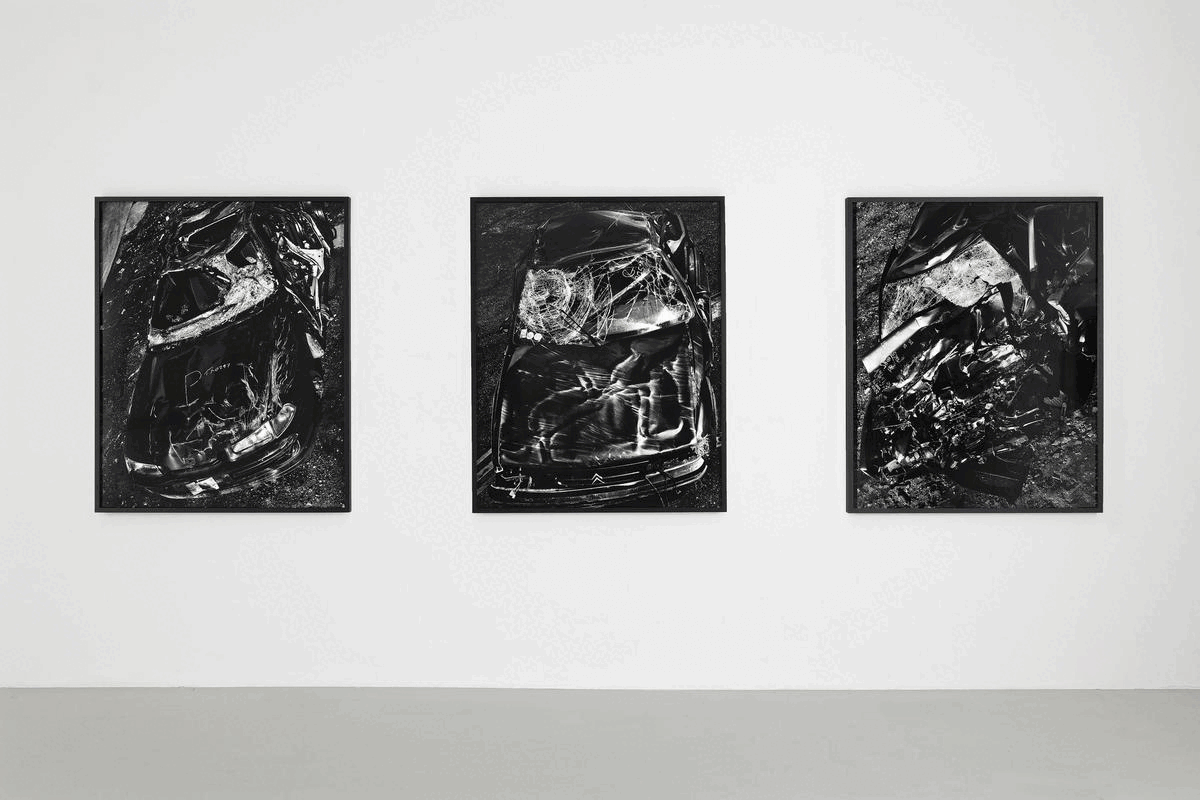La Beauté du Diable, FRAC Franche-Comté, Besançon, France
10.16.22 to 03.12.23
Frac Franche-Comté, Cité des arts, 2 passage des arts, 25000 Besançon
2pm - 6pm Wednesday to Friday / 2pm - 7pm Saturday and Sunday
La Beauté du Diable explores the presence of Satan in contemporary art from the angle of his figuration and his metamorphoses. Beyond the representations explicitly referring to the Devil or his symbolism, the exhibition aims to question the aestheticization of Evil through works that operate a transmutation of the "repulsive" in aesthetic enjoyment.
Group exhibition presenting works from the series Meat (1998) and Cars (1998) by Valérie Belin.

Beyond their subject matter, these series are essentially about light and the transfiguration of the morbid into the sublime. It is this tragic beauty that we find in the Meat series, from which the photograph Untitled (1998) is taken, which documents a slaughterhouse. We see animal carcasses agglomerated in such a way that, losing their contours, they become abstract compositions. They give off a cruel resemblance to human bodies and mass graves. They proceed to a literal disfiguration that is reinforced by the sublimation of black and white, darkness and light accentuating the sinuosities of the flesh, annihilating the violence of the discolored blood. The work thus corroborates the vision of Georges Bataille when he affirms that "the slaughterhouse is a matter of religion", comparing it to these temples "serving at the same time to the implorations and to the killings".
In this sense and even in the absence of bodies, Valérie Belin's series of carcasses inevitably brings to mind Robert Wiles' photograph, published by LIFE magazine on May 12, 1947, showing the intact body of a young woman resting on the roof of a car after having thrown herself off a building. Reprinted by Andy Warhol (Suicide (Fallen body), 1962) for his Death and Disaster series, the publication in the newspaper was accompanied by the words "The most beautiful suicide". The news is dramatic and has a horror quality to it. There is no beauty in the consequences of this gesture, contrary to what the newspaper's racist and cynical mention suggests. But what is beautiful, on the other hand, is the photograph itself, which refers to the history of painting, shows a young woman as if asleep, drowned by the play of lights reflecting on the body deformed under the shock of the fall to form a delicate drape around the body. A tragic beauty that we also find in this particularly sculptural work by Valérie Belin, where the violence of the contrasts underlines the inconceivable forms taken by this bruised "body".
Curator: Benjamin Bianciotto, PhD in art history and Sylvie Zavatta, director of the Frac